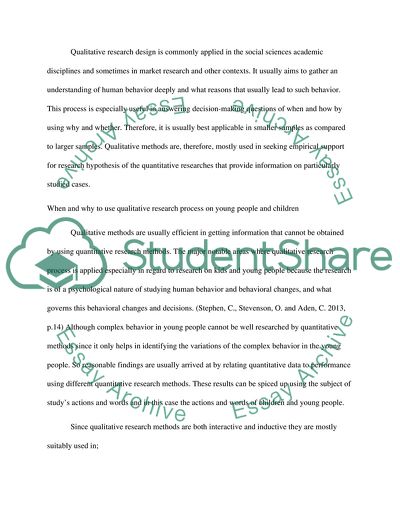Cite this document
(Research Methods: How to Apply Them on Young People and Children Literature review Example | Topics and Well Written Essays - 2000 words, n.d.)
Research Methods: How to Apply Them on Young People and Children Literature review Example | Topics and Well Written Essays - 2000 words. https://studentshare.org/education/1826864-consider-when-how-and-why-researchers-might-use-qualitative-and-quantitative-approaches-in-their-research-with-children-and-young-people
Research Methods: How to Apply Them on Young People and Children Literature review Example | Topics and Well Written Essays - 2000 words. https://studentshare.org/education/1826864-consider-when-how-and-why-researchers-might-use-qualitative-and-quantitative-approaches-in-their-research-with-children-and-young-people
(Research Methods: How to Apply Them on Young People and Children Literature Review Example | Topics and Well Written Essays - 2000 Words)
Research Methods: How to Apply Them on Young People and Children Literature Review Example | Topics and Well Written Essays - 2000 Words. https://studentshare.org/education/1826864-consider-when-how-and-why-researchers-might-use-qualitative-and-quantitative-approaches-in-their-research-with-children-and-young-people.
Research Methods: How to Apply Them on Young People and Children Literature Review Example | Topics and Well Written Essays - 2000 Words. https://studentshare.org/education/1826864-consider-when-how-and-why-researchers-might-use-qualitative-and-quantitative-approaches-in-their-research-with-children-and-young-people.
“Research Methods: How to Apply Them on Young People and Children Literature Review Example | Topics and Well Written Essays - 2000 Words”. https://studentshare.org/education/1826864-consider-when-how-and-why-researchers-might-use-qualitative-and-quantitative-approaches-in-their-research-with-children-and-young-people.


